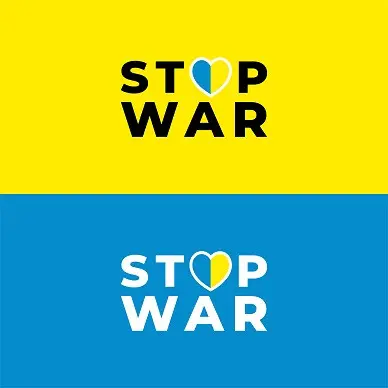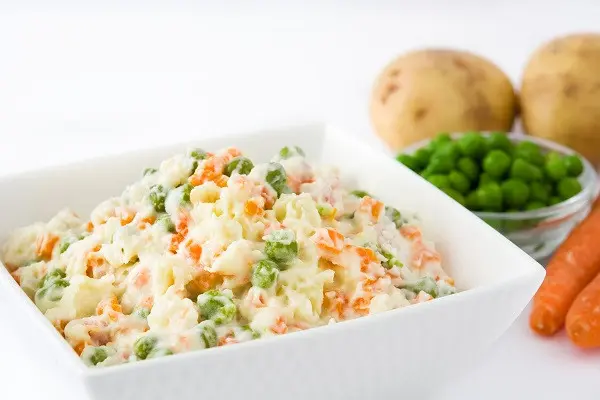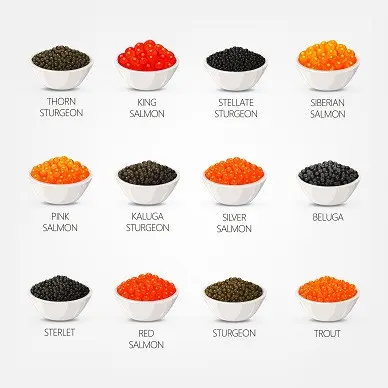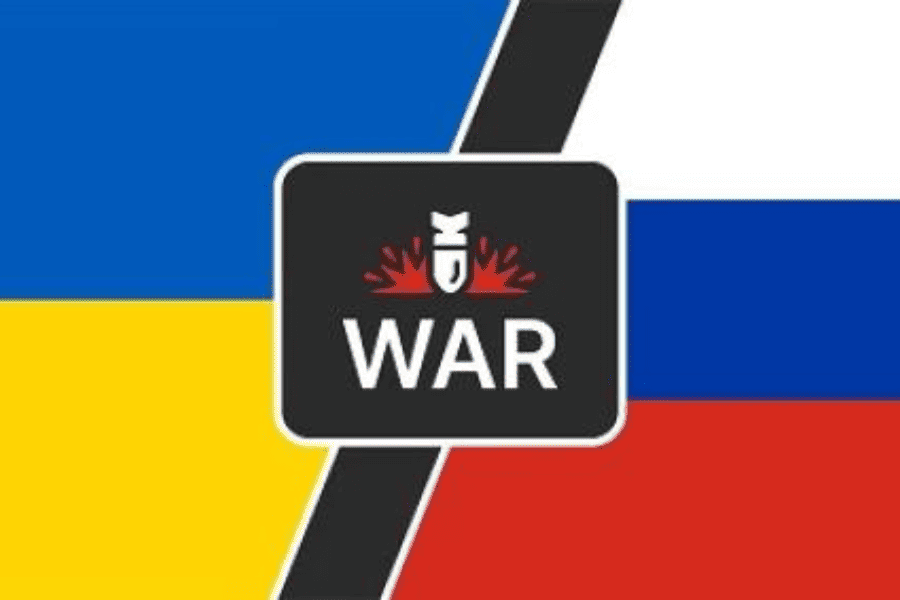RUSSIA VS. UKRAINE

ACTUAL VS. TARGET
Market crash? Rising interest rates and risks? Losses in value? Sanctions against Russia, rising energy prices, supply bottlenecks in construction, money laundering in properties owned by Russian oligarchs - what consequences could the war in Ukraine have for the German property sector? What investors and property developers need to be prepared for. The news from Ukraine is shocking the world. We are confronted with the tragic reality of war on a daily basis. We see images of destroyed buildings in the media and people who have had to leave Ukraine with the last of their belongings in order to save their lives are standing at railway stations.
Rising energy prices, empty shelves, hundreds of thousands of refugees - the war in Ukraine has many consequences. For example, the wave of refugees is driving up demand for housing and putting additional pressure on the market. Added to this is the economic war against Russia, which is causing energy prices to rise. This is also having an impact on the property market.
On 24 February 2022, Russian President Vladimir Putin launched his war of aggression against Russia's sovereign neighbour, Ukraine. This war of aggression is a first in every respect and has far-reaching consequences. Unfortunately, many Ukrainians have already left their country due to the great uncertainty about the future. In Switzerland, the consequences of the war are being felt in particular through the high number of refugees and the sharp rise in petrol and gas prices. It is also questionable how Putin's invasion will affect other areas, such as property sales. As a result, interest rates on property loans are rising, as banks generally pass on the interest directly. This in turn leads to a reduction in demand. Property sellers should bear this in mind in their future endeavours. Banks will tighten their criteria for issuing loans and therefore buyers will receive financing less frequently or at lower interest rates. The lower interest rate will in turn depress the yield and the property will become less attractive in the current market situation. The property seller then inevitably has to reduce the price in order to find a property buyer. However, it remains to be seen how strong the effect of the war will be on inflation.
WHAT IS STILL SAFE TODAY
Will Switzerland remain a "safe haven" for investors? The war in Ukraine is affecting the property sector on several levels. We assume that in the current crisis, real assets will become an even greater focus for investors. Banks, in turn, are likely to scrutinise potential investments more closely than before and reduce risks where necessary. At the very least, the run on commercial property is not expected to end. Institutional investors in particular will remain active in this area. Alternative investments with a similarly attractive risk profile are likely to remain scarce, with the result that some of the upcoming new investments are likely to flow into the property sector and further drive demand in an already scarce market. In addition to the tragic theatre of war, however, there are also many other positive aspects to report about the two countries.
The war in Ukraine is not only causing unimaginable suffering for the people living there, but is also creating an uncertain market situation. It is assumed that the war in Ukraine and the economic sanctions against the Russian Federation will also have a negative impact on our property market. In particular, higher energy and material prices and a possible shortage of materials are seen as significant potential negative factors. Overall, however, we expect the negative consequences to be predominantly minor to moderate. The construction and property sectors in particular are feeling the effects of the Russian war of aggression directly on construction sites. The shortage of materials means that they are becoming increasingly expensive. The procurement of raw materials such as bitumen, steel and aluminium, which are largely sourced from Russia and Ukraine, could become problematic. However, it is not only construction costs that are rising, but also the interest rates for construction loans.
The war in Ukraine is a tragedy. In view of the suffering caused to millions of people by this unjustifiable attack, all economic issues are being pushed into the background. Inflation, rising interest rates and uncertainty are likely to cause a slowdown in price increases on the property market - including in Switzerland. However, we do not expect a trend reversal in the form of falling prices. Domestic and foreign investors see Switzerland as a safe haven, especially in the current environment of growing uncertainty. So far, there has been no slowdown in market activity, unlike at the beginning of the coronavirus pandemic, when the market went into a state of shock. Sellers therefore continue to face high demand. Buyers should keep an eye on interest rate developments: In view of the expectation of rising interest rates, they should consider bringing forward planned acquisitions in order to take advantage of the still favourable borrowing conditions.

UKRAINE - A CULTURE WITH A LOT OF FLAVOUR
Ukraine - Europe's "breadbasket" - provides much more than just wheat. Potatoes, fruit, berries, mushrooms, herbs and meat, for example, play an important role in the preparation of tasty, hearty meals. Pork and bacon are very often found in Ukrainian recipes. However, beef, sheep and poultry, especially goose and duck, are also very popular. Ukrainian cuisine is the national cuisine of the Eastern European state of Ukraine. It has incorporated elements of various European cuisines, such as Russian, German, Turkish, Polish and Hungarian cuisine. However, the proportion of Old Slavic elements is the most significant. Ukrainian cuisine has also influenced the national cuisines of neighbouring countries, including Polish and Russian cuisine. Through Ukrainian immigrants to the USA and Canada, it also became known in North America. The Ukrainian cooking tradition continues to be cultivated in numerous restaurants in Ukraine, Russia and now also in Europe and North America. A speciality of Ukrainian cuisine is the variety of foods used. Meals tend to be hearty and the main dish of the day is warm and is usually served at lunchtime, i.e. around 2.00 pm. In the summertime, various types of meat and local vegetables are grilled, depending on the season, and preferably eaten outdoors.
People in Ukraine drink much more tea than coffee, not only at breakfast, but also in the afternoon and evening. The big cities in western Ukraine are an exception here, where there are still a few Viennese coffee houses. In addition to mineral water, meals are often accompanied by fruit compotes (usvar, a compote of dried fruit and honey) and kvass. Vodka (Ukrainian: horilka) is a traditional favourite among alcoholic drinks, although consumption has declined in recent years. Home distilled spirits (samogon) are very common. Beer and wines of domestic and European varieties are becoming increasingly important. Many families living in the rural regions of Ukraine press their own fruit juice for home consumption from the fruit that grows in their gardens.

Borscht:
is a soup that is traditionally prepared with beetroot and white cabbage and is particularly popular in Eastern and Central Europe. The origin of the word "borscht" or "barszcz" most probably lies in the Slavic name for the meadow hogweed: in the Middle Ages, its non-toxic shoots and young leaves were an integral part of the soup. Borscht is traditionally prepared and eaten in an area stretching from Poland to Galicia, Romania, Ukraine, Belarus and Russia. However, borscht is not necessarily served as a meal in its own right, but often as a soup or snack for lunch or dinner. Contrary to popular belief, this popular vegetable soup with beetroot, white cabbage, potatoes and tomatoes does not originate from Russia, but is the national dish of Ukraine.
Wareniki
Wareniki is a dish of Slavic cuisine that is widespread throughout the entire territory of the former Soviet Union. It is traditionally associated with Ukrainian cuisine[and is considered a national dish in Ukraine. It consists of stuffed, crescent-shaped dumplings that are cooked in salted water or (in some regions) steamed.
Wareniki are almost identical to some types of Polish pierogi. In some western Ukrainian regions, the two names, Warenyky and Pyrohy, are used for the same dish. One of the most common types of pierogi in Poland, pierogi ruskie (with a potato, cheese and curd filling instead of a meat filling), refers in its name to the former eastern Polish and present-day western Ukrainian regions (Ruthenia). In the rest of Ukraine, similar to Russia, the terms pyrohy and pyrishki are used for cakes and baked dumplings, but not for pasta dishes.
NOT ONLY CAVIAR COMES FROM RUSSIA
but also other exciting recipes. Some dishes and ingredients of Russian cuisine are world-famous, for example caviar, salted gherkins, vodka, Crimean sparkling wine, borscht, pelmeni, shashlik, BÅ"uf Stroganoff, Kiev chops and sauerkraut are among the highlights of Russian cuisine.
The basic ingredients of Russian cuisine are cabbage, buckwheat and regional and seasonal vegetables. But beef, pork, chicken and fish also feature in many Russian dishes. As in many other eastern countries, pastries, cakes and desserts are very sweet in Russia.
Russian cuisine has existed in its present form for over 100 years.
The Russian Cuisine is hearty and tastes good. Whether it's spicy solyanka, blini with a delicious topping or delicious boeuff stroganoff, there are many great dishes that you have to try. Almost everyone is familiar with evergreens such as Russian eggs or the Russian ploughman's pie, but do you know borscht, pelmeni and okroshka?

Pelmeni:
are dumplings originally from Russia, cooked in water or broth and filled with meat, which are eaten either as a soup garnish or as a main course. Today, they are one of Russia's national dishes and are known throughout the country. The dough for pelmeni consists of flour, salt, water and egg. It is made in various ways into small, round sheets of dough, which are filled with a mixture of minced meat (pork, beef, other types of meat) with onions, garlic, salt and pepper and carefully sealed. The pelmeni are then boiled in salted water or broth for around 5 to 10 minutes, depending on their size. Bay leaves are often added to the boiling water. Dumplings with fillings of potatoes, cabbage or sweet fillings of cream cheese and berries are called vareniki.
Okroshka:
Okroshka (Russian окрошка, from крошиÑ'ÑŒ, to crumble) is a Russian national dish. The cold soup is made from sour cream (optionally also plain buttermilk or kefir), sausage (lyoner), hard-boiled egg, radish, potato, parsley, chives, dill and cucumber. It is usually flavoured with hot mustard, vinegar, pepper and salt.
In any case, you should not forget the positive characteristics and also think about the nice things. Be it the culture or the flavour as well as many other positive aspects of the two countries. With this in mind, we hope you enjoy cooking and bon appétit! Your WENET Team.
Would you like to be kept up to date with our blog articles?
Then sign up for the WENET newsletter right here below!
